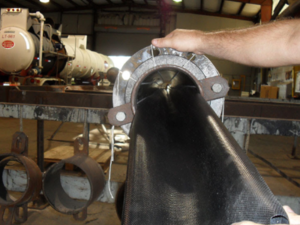Halloween – Our 1st Dating App
| Halloween – Our 1st Dating App |
Looking at Halloween in an historical context, its origins lie among the Celts of ancient Britain and Ireland. And we know that Halloween – All Hallows Day – came to the U.S. when the Europeans brought their customs with them. But was Halloween always associated with blood, gore, the dead, scary monsters and witches with ugly features? No! Quite the opposite!
In the 18th century Ireland, Halloween was a time for matchmaking: a cook might bury a ring in mashed potatoes on Halloween hoping to find true love with the diner who found it. In Scotland, a young woman would name a hazelnut for each of her suitors and toss the nuts into the fireplace. The nut that burned to ashes rather than popping represented the girl’s future husband. Other times, a sugary concoction of walnuts, hazelnuts and nutmeg would cause the young lady to dream about her future husband. Tossed apple peels over the shoulder on Halloween might fall on the floor in the shape of her future husband’s initials!
In the 2nd half of the 19th century, new immigrants flooded America and brought these traditions with them. These new Americans would dress up in costumes and have neighborly get-togethers. In the early 20th century, Halloween became a “feminine” holiday, organized around and for women.
Consider that in the early 20th century, the witch in popular culture was “beautiful, sumptuous and alluring”! The beautiful witch decorated the soap wrapper. The “New Woman” of the early 20th century took action and made things happen for herself, whether it be college, joining the workforce or suffrage. Timidity and passivity were no longer acceptable in defining a woman.
The Smithsonian has pictures from that time depicting Cupid posing with a jack-o-lantern or a black cat. Pictures of Halloween in the early 20th century are more focused on flirtation, rather than fright. Halloween parties “involved decorating, organizing games, sending out invitations and maintaining social relationships” – all things from the feminine sphere.
In a way, we might say that Halloween presented our great, great, great grandmothers with an opportunity to search for our great, great, great grandfathers. In that restrictive society, women could dress up in a costume, go outside or to a party, and take control! Fate was theirs.
The door to door trick-or-treating is a post 1945 tradition following the baby boom. Prior to 1945, Halloween was spent attending social parties, gathering in homes, playing organized games and forming relationships. Consider this: Bobbing for apples, a staple at these parties, is a courting ritual that goes back to the Roman Festival Pomona, the goddess of agriculture and abundance.
The Halloween parties of the late 19th and early 20th centuries presented the women of the era a means of dressing up, speaking out and determining their own fate – especially when it came to finding a husband. The parties and costumes of the early 20th century were the database for finding a husband. The witch was beautiful.
To learn more about who Dixie is, visit our About page.







Stay Connected